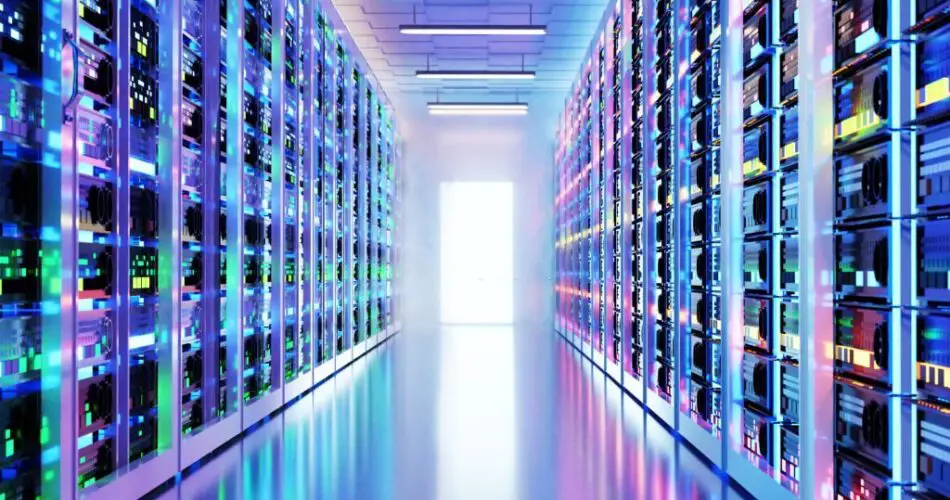Looking for a way to Create A Bitcoin Mining Farm? Bitcoin is a digital currency that has gained widespread popularity and adoption since its creation in 2009. Unlike fiat currencies, Bitcoin has no central authority or institution controlling the supply. Instead, new bitcoins are generated through a process called mining.
Mining involves using specialized computer hardware to solve complex cryptographic puzzles. When a puzzle is successfully solved, a new block is added to Bitcoin’s public transaction ledger known as the blockchain. The miner who solves the puzzle is rewarded with a set amount of newly minted bitcoins. This provides an incentive for people to provide the computing power needed to maintain the network.
A Bitcoin mining farm is essentially a data center dedicated specifically to mining bitcoins. It is filled with specialized computers, known as application-specific integrated circuit (ASIC) miners, that do nothing but mine bitcoins 24 hours a day. By pooling resources into a mining farm, miners can greatly increase their odds of successfully validating blocks and earning bitcoin rewards on a consistent basis.
In this article, we will cover everything you need to know about building your own Bitcoin mining farm from the ground up.
Choosing Your Mining Hardware
The most important decision when building a mining farm is choosing your mining hardware. Application-specific Integrated Circuit (ASIC) miners are specially designed machines that can solve Bitcoin’s proof-of-work algorithm far more efficiently than regular computers. There are a few factors to consider when selecting the right ASIC miner model for your farm:
- Hashrate: The primary factor is the hashrate or mining power of the ASIC miner. Hashrate is measured in terahashes per second (TH/s). The higher the hashrate, the more computations the miner can perform per second, increasing your odds of finding a valid block. Top models today offer hashrates of over 100 TH/s.
- Efficiency: You want miners that can generate maximum hashrate while consuming reasonable amounts of electricity. Efficiency is measured in joules per terahash (J/TH). The lower this value, the less power required per unit of mining power. Look for ASIC miners with efficiency ratings under 30 J/TH.
- Cost: The upfront cost of the miners along with power needs will determine your overall profitability. Newer generation miners often offer better efficiency and higher hashrates, but can be more expensive to acquire. Look for the best value miner within your budget.
- Reliability and warranty: Be sure to choose hardware from reputable manufacturers that have a proven track record of reliable units. Opt for miners that come with a decent warranty period in case of defects.
Popular ASIC miner models include the Antminer S19 Pro, Whatsminer M30S, and AvalonMiner 1246. However, new and more powerful models are constantly being released so be sure to do your research.
Setting Up The Physical Mining Farm
Once you’ve chosen your mining hardware, the next step is to set up the physical infrastructure for your farm. This includes finding a suitable location, providing adequate power and cooling, and installing the mining rigs.
Location
When choosing a location for your mining farm, there are several factors to consider:
- Climate: Because miners generate so much heat, a cool climate is ideal to reduce cooling costs. Locations with average temperatures below 25°C are recommended. You may even want to consider places with natural cooling like caves.
- Electricity: Proximity to inexpensive and reliable electricity sources is crucial to profitability. Areas with excess energy capacity or cheap industrial power are ideal. Many miners also opt for regions with cheaper electricity rates.
- Legality: Make sure Bitcoin mining is legal in your jurisdiction and you have any required business permits or licenses. Some areas have banned mining operations completely.
- Security: Mining farms should be located in secure facilities to protect against theft and damage. Alarm systems, cameras, and guards may be necessary.
Many mining farms are located near coal plants, hydroelectric dams, wind farms, and other natural sources of cheap and renewable electricity. Others reside in large warehouses or data centers.
Electrical and Cooling
Setting up sufficient electrical infrastructure and cooling is vital. Some key considerations:
- Power capacity: All your mining equipment will require immense power. Ensure your location can provide the necessary megawatts of power.
- Electrical wiring: Safely install enough outlets and amperage capacity to plug in all miners. Use proper gauge wiring to avoid fire hazards.
- Ventilation: Proper airflow is crucial to dissipating heat. Install industrial fans, air ducts, and ventilation shafts throughout the facility.
- Air conditioning: Use industrial AC units to keep hardware within operating temperature ranges. This can make up over 40% of operational costs.
- Backup power: It’s recommended to have backup generators or uninterruptible power supplies in case of outages.
Physical Hardware Setup
Once your location is prepped, it’s time to set up the actual mining rigs:
- Carefully install mining units in specially designed racks, shelves, or stacked configurations. This allows for compact arrangement.
- Organize hardware based on electrical needs and cooling capabilities. More heat-sensitive units should be placed in cooler spots.
- Use Ethernet cables to connect miners to your mining pool and management software.
- Configure adequate outlets to plug devices into power sources. Do not overload any single outlet.
- Mount fans and ducts to direct airflow across miners and dissipate heat.
- Set up monitoring systems to track temperature, humidity, power draw, and hashrate from miners.
Configuring Your Mining Software and Pool
To start earning bitcoin, you will need to configure software to interface with the mining pool:
- Bitcoin mining software: This software connects your hardware to the Bitcoin network and mining pool. Popular options are CGminer, BFGminer, and EasyMiner.
- Join a mining pool: Solo mining is no longer viable. Join a pool to share processing power and split rewards. Larger pools like F2Pool and AntPool offer regular payouts.
- Configure pool settings: Enter your wallet address, worker login, and any other credentials required to connect to the pool. Some pools have their own software.
- Optimize software settings: Adjust settings like overclocking to maximize the hashrate of your hardware and efficiency. Monitor temperatures closely when overclocking.
- Assign device IDs: If running multiple miners, assign unique identifiers to each device to track them separately.
- Set automatic payout rules: Most pools allow you to set a payout threshold so you get paid automatically when a certain amount is reached rather than manually requesting payouts.
With your accounts set up properly, your farm will begin earning a share of the bitcoin block rewards along with transaction fees!
Monitoring and Maintaining Your Farm
With your mining farm operational, there are some important monitoring and maintenance tasks:
- Check hashrate frequently: Hashrate indicates your mining power. Make sure your miners are operating at maximum speeds. Troubleshoot any drops in computing power.
- Monitor miner status: Check that devices are online and not overheating or experiencing crashes. Restart miners as needed.
- Update firmware: Upgrade miner firmware to latest versions for improved performance and security.
- Clean dust buildup: Clean miners routinely to prevent overheating from dust accumulation which reduces hashrate.
- Replace faulty units: RMA faulty miners to the manufacturer for repair or replacement. Have backup units if possible.
- Secure the facility: Maintain top-grade physical security and cybersecurity to safeguard your investment from theft and hacking.
- Optimize electricity: Reduce costs by using electricity as efficiently as possible, especially during peak pricing periods.
With diligent monitoring and maintenance, you can maximize the lifespan and profitability of your mining farm.
FAQs on How To Create A Bitcoin Mining Farm
How profitable is a mining farm?
Profitability depends on many factors like hardware, electricity costs, mining difficulty, and bitcoin price. With efficient ASIC miners and cheap power, profitable operations are still possible, but returns are usually modest. Large farms can earn over a million dollars per year.
Is it better to mine solo or join a pool?
Pooling is almost always better nowadays. Solo mining has an extremely low probability of earning block rewards consistently. Joining a pool shares the work and allows you to receive smaller but more frequent bitcoin payouts rather than relying on luck.
What are the ongoing costs of running a farm?
Ongoing costs include electricity, equipment maintenance and repairs, internet, cooling, and rental expenses if hosted at a data center. Electricity alone can eat up over 60% of revenues. Maintain these costs as low as possible.
Is it possible to make money mining with a GPU?
GPU mining is highly unprofitable now compared to ASICs. The mining difficulty is far too high to earn rewards mining on consumer graphics cards. Stick to specialized ASICs for any chance of profitability.
How long will mining be profitable?
It’s unclear how long mining will remain profitable. Some factors like the transition to fee-based rewards make certain profitability decline in the long run. But other developments like increasing Bitcoin price could maintain decent returns for some time to come.
Key Takeaways
- A Bitcoin mining farm is a data center dedicated to mining bitcoins. ASIC miners do the mining work to earn block rewards.
- Choosing efficient ASIC miners with high hashrates is key to maximizing earnings. Top models can hash over 100 TH/s.
- The physical location should have low electricity costs, proper cooling, and ample power capacity to support multiple miners.
- Mining software connects your hardware to the Bitcoin network so you can join a mining pool and earn income.
- Careful monitoring and maintenance is required to keep hardware in good condition and maximize your farm’s lifetime profitability.
Conclusion on How To Create A Bitcoin Mining Farm
Setting up a Bitcoin mining farm requires extensive planning and effort, but can be very rewarding financially long-term with proper execution. With competitive hardware, low electricity costs, and efficient operations, Bitcoin mining remains a potentially lucrative endeavor. As mining difficulty rises over time profitability may decline, but Bitcoin’s continued appreciation can help offset increasing costs. With the right preparation and diligent management, a mining farm can produce sizable bitcoin income.






